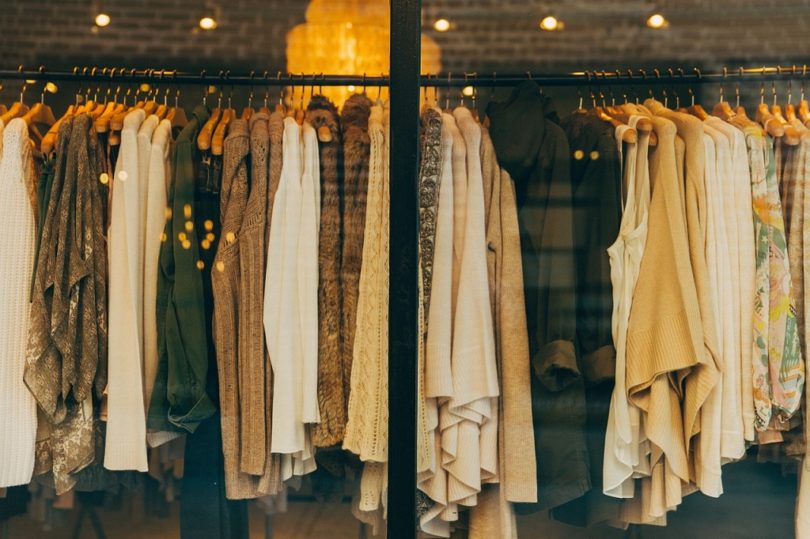Discovering the World of Lasting Boutique Fashion Brands
Wiki Article
A Deep Study the World of High-Fashion Runways: Understanding Garments as Art
Developers, a lot like masterful artists, weave complex narratives via shade, form, and material, challenging standard standards and redefining elegance requirements. As we discover these sartorial spectacles, we must consider: what function does fashion play in shaping societal values, and exactly how does it show the ever-changing tapestry of human feeling and identity?The Development of Runway Shows
The trajectory of runway shows has actually transformed substantially over the decades, advancing from special market events to fascinating eyeglasses that mix style with art. Traditionally, path shows made love events, kept in ateliers or little places, primarily attended by buyers and sector experts. These early presentations concentrated on the garments' workmanship and industrial feasibility, providing a straight and practical screen of seasonal collections.As the fashion sector expanded, the nature of runway shows began to change. The 1970s and 1980s noted a transforming point, with designers seeking to identify themselves with even more theatrical presentations.
In the last few years, modern technology and social media sites have actually better transformed path programs, making them easily accessible to an international audience. Livestreaming and electronic platforms have democratized style, permitting fanatics worldwide to witness these occasions in real-time (boutique fashion). This advancement reflects a wider cultural shift, where high-fashion runways serve as a dynamic intersection of performance, style, and development
Designers as Visionary Artists
Designers in the high-fashion sector have obscured the lines between useful garment development and the theoretical realm of art. By welcoming creative disciplines such as sculpture, paint, and progressive installations, designers craft garments that test conventional fashion norms and raise them to art forms.Visionary developers draw ideas from a myriad of sources, consisting of abstract art, historical recommendations, and individual narratives. They possess an unique capability to envision and materialize ideas that press the borders of traditional style, commonly redefining aesthetic standards at the same time. This imaginative ingenuity is showcased with dramatic silhouettes, cutting-edge materials, and elaborate workmanship, which welcome viewers to experience fashion as greater than simply wearable items.
Furthermore, the path acts as a canvas for these musicians, where illumination, music, and established layout coalesce to create immersive experiences. These presentations are not merely display screens of clothing however are orchestrated efficiencies that stimulate feeling and provoke idea, verifying the developer's duty as a real musician in the modern social landscape.
Social Impacts in Fashion
Social tapestry weaves its complex patterns into the material of style, influencing designers internationally. The dynamic interchange of cultural tales, traditions, and symbols notifies and influences collections that elegance high-fashion runways. Developers meticulously attract from their heritage or involve with cultures distinct from their you can look here very own, crafting garments that offer as visual narratives. This cultural discussion not just enriches the aesthetic variety yet likewise promotes a deeper understanding and gratitude of worldwide identifications.The impact of culture on style is usually seen in the reinterpretation of typical garments and patterns. For example, using Japanese bathrobes, Indian saris, or African prints in contemporary style shows a blend of social authenticity and contemporary aesthetic appeals. Developers such as Valentino's Pierpaolo Piccioli and Alexander McQueen's Sarah Burton have been recognized to incorporate abundant social themes into their couture collections, translating history into wearable art.

Development in Material and Layout
Development in fabric and style continually improves the landscape of high-fashion, pushing boundaries and redefining possibilities. Designers are increasingly exploring the assimilation of innovation, such as 3D printing, which enables for the creation of complex frameworks that were previously unbelievable.The style industry is experiencing a see this page surge in the usage of environmentally friendly products, derived from recycled plastics, organic fibers, and also naturally degradable parts. Designers are embracing these materials to craft garments that are both conscious and visually striking of their ecological impact.
In terms of design, speculative kinds and progressive silhouettes are constantly revolutionizing the runway. By including innovative techniques and unique products, developers grow garments that blur the line in between style and art, establishing brand-new requirements for creativity and expression in the high-fashion sphere.
Effect of Style on Culture
Fashion possesses an extensive influence on society, offering as both a reflection of social identification and a stimulant for social modification (boutique fashion). Through its advancement, style has mirrored social shifts, enveloping the zeitgeist of numerous periods.In addition, fashion has the power to bridge cultural gaps, cultivating understanding and recognition among varied teams. As globalisation speeds up, the cross-cultural exchange of style ideas comes to be increasingly substantial, promoting inclusivity and diversity. The increase of streetwear, stemming from city subcultures, highlights just how style can go beyond socio-economic limits, giving people a means of self-expression and empowerment.
Essentially, style is not simply concerning visual appeals; it is a dynamic force that affects values, mindsets, and societal progress (boutique fashion). By constantly interacting with social and social currents, fashion remains an integral component of the collective human experience

Final Thought
Developers, akin to visionary artists, coordinate collections that reflect identity, emotion, and social stories, challenging conventional appearances. This crossway of style and creativity not only astounds target markets worldwide however likewise influences societal perceptions and promotes a much deeper admiration for cultural variety.
Cultural tapestry weaves its complex patterns into the fabric of fashion, affecting developers globally.Fashion possesses a profound influence on culture, offering as both a representation of cultural identity and a catalyst for social adjustment.
Report this wiki page